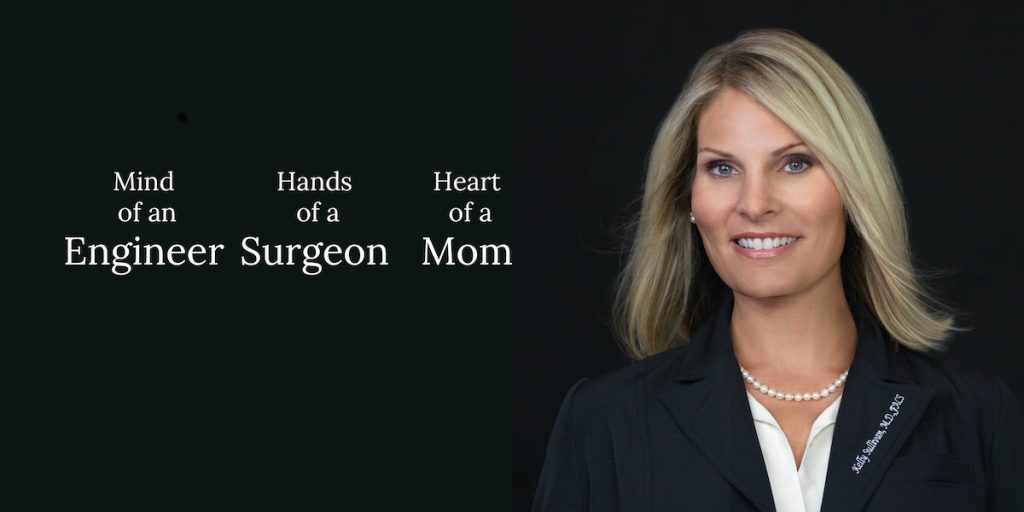
When I was five years old, the family dog attacked me and tore my upper lip half way off on Christmas Eve. The Plastic Surgeon on call for the ER left his family and friends to come to the hospital to take care of a scared little girl and her panicking parents. He even thought to bring me a puppet, which I named Christmas George. He operated on my lip and assured my parents that my deformed face would improve, although the scar would always be there. While he managed to repaired my injury, perhaps more importantly, he inspired me to become a compassionate skilled plastic surgeon like him.
I decided then and there that I wanted to become a surgeon who could help people. I wanted to connect with people who were in despair about their injury or illness, and I wanted to do something that could help make it better. I knew that I could never change the fact that someone had been injured and had changes to their body or face that they didn’t like, or had been diagnosed with cancer, but I could try to find ways to help them to become happier and more confident. This is why since the age of five, I have focused on working hard and learning everything I could to become a compassionate physician and surgeon. This is why I dedicated four years of college, four years of medical school and then six years of surgical residency to learning everything I could about general surgery and then plastic and reconstructive surgery. This is why I continue to read medical journals, attend conferences, practice surgical skills and am available 24 hours a day, 7 days a week to my patients who need my help. This is why I took that oath of, “First do no harm.”
I have the honor and privilege of being a doctor and a surgeon, and I take this responsibility very seriously. My patients’ safety always comes first, and I work hard to help my patients find the surgical, or non-surgical, treatment that will best achieve the results they want while also keeping them safe. I am a very good surgeon, but I am also human and there are limits to what I can do.
The human body is a living, breathing thing, and as such we cannot control and predict how it will behave and how it will heal. The body is not a clay sculpture, and while we can surgically cut and move things and put them where we want them, we cannot do this without scars, and we cannot force the body to keep them where we put them forever. The surgery I do cannot fix a marriage, get someone a job, or make someone happy. Plastic and Reconstructive surgery can help someone rebuild something that has been lost from trauma or cancer, or it can repair damage that has been caused by pregnancy or weight loss, and it can sometimes turn back the clock of time a bit. But it is just one piece of the puzzle of self-confidence and happiness. Surgery cannot be done without scars and it cannot be done without risk and sometimes complications. And sometimes the risks of complications, or not being able to meet expectations, exceed the benefits of surgery, and in this case your surgeon will advise against surgery. Plastic surgery can and should be done by a caring physician who has dedicated his or her life to learning the trade and maintaining the highest standards of board certification, and who genuinely cares for the health and well-being of her patients. Plastic surgery is successful when there is a partnership between the patient and surgeon who both work together to understand the goals of surgery, create an effective plan, and then focus on realistic results that can be safely achieved. My surgeon could not erase the scars or the trauma of my being bitten by a dog, but he did make me whole again and he inspired me to go forward in life doing what I can to help other people feel better. At the end of the day, this is what life is all about and this is why I am a plastic surgeon.
- Dr. Kelly Sullivan, MD, FACS
